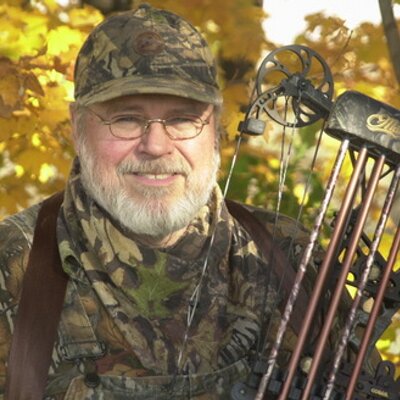Autumn is waiting in the wings.
The cooler morning temperatures last week and early this week were just a prelude to what’s to come. Check the calendar. The first day of fall is less than two weeks away.
Now is the time to think about fall fishing opportunities on Kentucky’s major lakes. What’s your target fish?
Here are three good options on where and how to fish:
Muskellunge

The state record Muskie weighed 47 pounds and was caught by Sarah K. Terry at Cave Run Lake on November 2, 2008. (Photo from KDFWR )
In Kentucky, muskies are present in the Green, Licking, and Kentucky River basins, and their major reservoirs, which include Cave Run Lake, Buckhorn Lake, Dewey Lake, and Green River Lake.
September is arguably one of the two best months of the year to fish for this toothy brawler.
Cave Run Lake is the obvious choice of a lake to fish. The fishery is rated excellent and has produced the current state record. Trophy-size fish, 40 inches and larger are present. Fall fishing can be as good or better than fishing in the spring.
Crankbaits, jerk baits, 1-ounce spinnerbaits and in-line bucktail spinners are top lures for casting when muskies are on shoreline cover, or on flats near channels.
Color is a personal choice, but at Cave Run Lake it’s hard to beat a black in-line bucktail spinner with chartreuse blades, or any fluorescent color combination, like red and orange.
Balsa wood twitch baits are a good crankbait choice in the fall too. These lures have a wide wobble. Twitch it on the surface, then bring it in with a steady retrieve. Color preferences for twitch baits are red, chartreuse, or black back, with silversides, or fire tiger.
In the fall, fish timbered coves, gently-sloping gravel banks or flats adjacent to channels. The best time to fish on Cave Run Lake during the fall, is a drizzly, overcast day, what avid anglers refer to as “muskie weather.”
Don’t overlook weed beds in the fall before the drawdown. One of the best weed beds on the lake is in Scott Creek, sandwiched between the creek channel and shoreline flooded timber.
The best fishing in the fall usually begins in September, when the shad move to the backs of bays as the water begins to cool down. Prime fall fishing occurs when water temperatures are above 53 degrees. Below 50 degrees, things start slowing down, and muskies move from coves to deeper water.
You’ll get more bites in September, but the larger muskies are usually caught later in the fall.
Brown Trout
Historically, the Lake Cumberland tailwaters has offered the best fishing for brown trout in Kentucky, first stocked in the early 1980s.
There is some evidence of natural reproduction, but it is incidental. The fishery is sustained by periodic stockings. The total number of brown trout stocked in the Lake Cumberland tailwaters varies annually, but is usually in excess of 30,000.
Brown trout feed heavily on aquatic insect larvae, pupae, and nymphs. As they age and grown larger, they become more piscivorous, eating live minnows, forage fish such as shad and alewives, and other small fish. Crayfish are a favorite food in the fall.
Fall fishing is especially good because brown trout are fall spawners and that time of year they become aggressive, opportunistic feeders.
In the Cumberland tailwaters, casting crankbaits is a good tactic because a lot of water can be covered. Larger browns are likely to be in deeper water, off the banks, below islands, shoals, gravel bars or hiding under deep shelf rock on outside bends of channels.
Drift down the middle of the river, casting towards both banks, and the center of the river, especially around tree snags.
The Rapala Shad Rap crankbait is a good lure choice in the fall, when browns are feeding heavily on crayfish. The SR05, a 2-inch, 3/16-ounce crankbait that dives 4 to 9-feet deep, is a good choice. The preferred color for fall fishing is the dark crayfish pattern.
Fly fishermen catch brown trout in the fall, casting streamers and large Wooly Buggers around shoreline timber.
Black Crappie
The state’s largest population of black crappie is in Kentucky Lake.
Many anglers associate crappie fishing with spring and summer, but the good crappie fishing doesn’t end with the onset of cool weather. There are several solid arguments for crappie fishing in the fall.
A slow decline of water temperatures sends a signal that it’s time to feed up in advance of winter, so crappie are more active. With hunting season in full swing and most pleasure boaters finished for the year, there’s less boat traffic.
From late September to late November crappie are in transition, moving from deep-water channels to brush and weed beds on flats, and eventually into the shoreline shallows. Their activity picks up as the hours of daylight shorten and water temperatures decline.
A good way to find active crappie in the fall is to cast a jig to the banks and stair-step it down into deeper water, hopping it over, around and through cover.
With this strategy, you’ll eventually find the depth at which crappie are feeding.
When the percentage of black crappie in Kentucky Lake began to increase, many anglers switched from fishing live bait to casting and drifting tiny tube jigs, rigged on a 1/32-ounce lead head, with a No. 6 hook, or a 1/16-ounce lead head, tipped with a curly tail grub, bait, on a No. 4 hook.
Jigs with blades add “thump,” which attract crappie. Some good choices are the Blakemore Road Runner and Leland’s Lures Fin Spin.
In the fall, black crappie tends to concentrate on gravel shorelines.
Fall fishing begins now. You’ll catch fish, while enjoying cooler temperatures with a backdrop of colorful leaves and blue skies.



























Great article. I can’t stop smiling myself after seeing the smile on Sarah’s face. That right there is a genuine “I am having a great day fishing smile” that’s for sure.